The State of Layer 2 Scaling and What the Future May Hold

Kevin Dwyer
November 16, 2023
7 min read
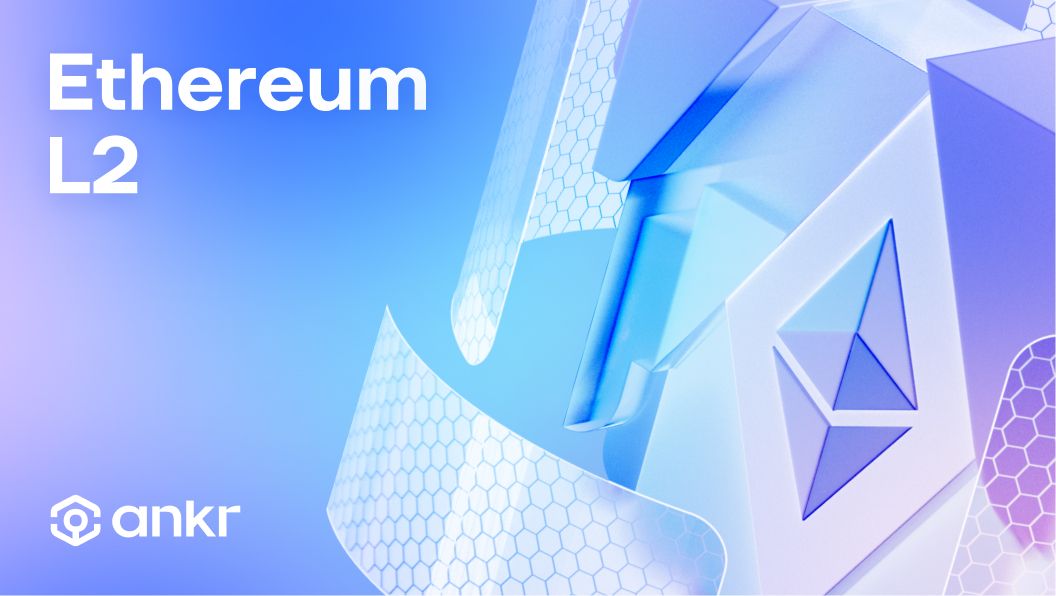
This year has been a significant one for Ethereum’s Layer 2 ecosystem, with new developments emerging at a rapid pace. The number of Layer 2 projects has exploded, with dozens of different protocols now available. These projects provide specialized scaling solutions for a wide range of use cases, including tokenization of real-world assets, DeFi, NFTs, governance, and gaming. This article will take a look at some top developments of 2023 and trends we may see more of.
Some fast stats & intel from this year:
-
Vitalik Buterin outlines the transition to L2 scaling solutions, “everyone moving to rollups,” as one of the three core changes that need to occur for Ethereum to become a mature tech stack. The Three Transitions.
-
Despite crypto winter’s decline in trading volume, Ethereum development soared, with Ethereum, Arbitrum, Optimism, and Polygon witnessing a 300% increase in smart contract deployments from Q1 to Q2. Cybavo.
-
For all gas fee transactions, L2s keep a portion of approximately 23.5% of the fees incurred from dApps built on them, while the rest of the value is retained on Ethereum (76.5%). Coindesk.
-
The launch of the BASE chain signaled a significant enterprise endorsement of Ethereum and its L2 ecosystem (OP Stack in this case) with popular use cases like friend.tech showcased to 100 million Coinbase users. Grayscale.
Current Layer 2 Blockchains Supported By Ankr
Ankr’s mission is to empower developers to build on any network they wish, be it a layer 2 chain or an Ethereum alternative. Ankr supports building on layer 2s in a few ways:
RPC Service
The first thing any Web3 developer needs is an RPC connection to the blockchain they want to build on. Ankr is building the future of distributed Web3 infrastructure, servicing dozens of Proof-of-Stake chains with an industry-leading global node delivery system, RPC aggregator, and suite of multichain tools to help developers build next-generation dApps.
Access instant RPC endpoints to the most popular L2s now →
Some of Ankr’s popular supported Layer 2s available on the RPC Service:
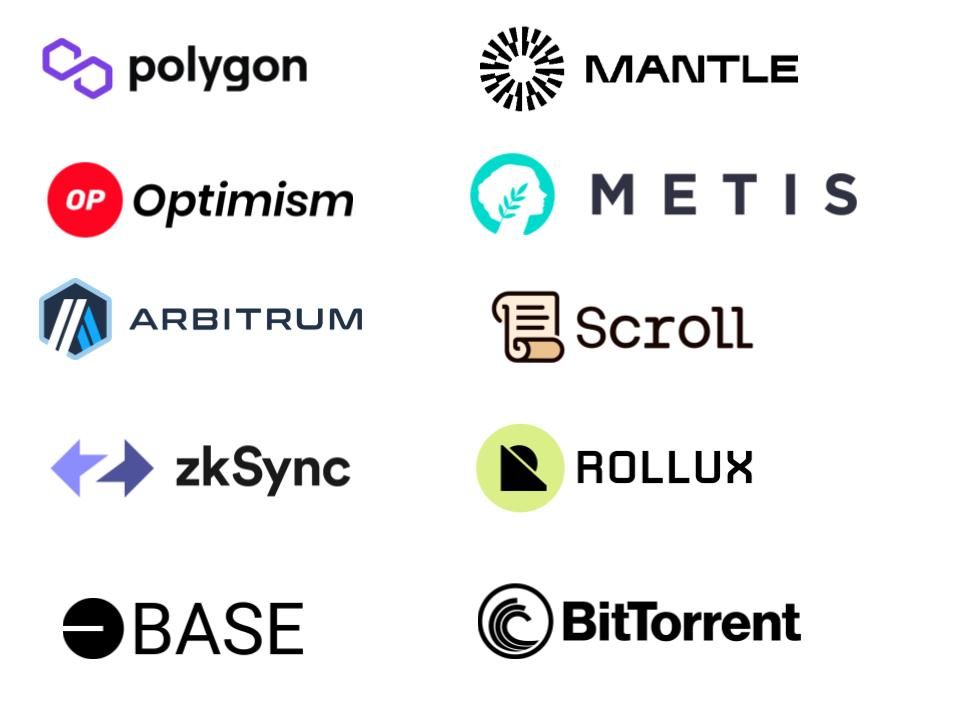
Rollup as a Service
Ankr’s Rollup as a Service launched this week with the initial partner of Optimism. Using Ankr’s Rollup as a Service, users can create an independent OP Stack-based L2 that exclusively serves traffic from their application or project. Ankr will soon expand this service to many additional layer 2 ecosystems.
Ankr will provide a variety of RaaS features to make it easier for developers to launch and manage their rollups, such as:
-
New L2 Blockchain Engineering: Ankr will provide end-to-end engineering for new rollups with customization at every level to meet client specifications for consensus mechanisms, programming languages, throughput, gas fees, and much more.
-
Rollup infrastructure: Ankr will launch and operate the underlying node infrastructure needed to run a rollup, such as full nodes, validators, sequencers, and aggregators.
-
Development tools: Ankr will provide various development tools and frameworks to help developers build their rollups, such as SDKs and other tools.
-
Security and auditing: Ankr will assist developers in securing their rollups and will consult on security auditing by third-party security firms.
-
Ongoing support: Ankr will offer ongoing support to developers, such as troubleshooting, performance optimization, and continued node operations.
Start building with Ankr’s RaaS →
The State of Layer 2 Scaling In 2023
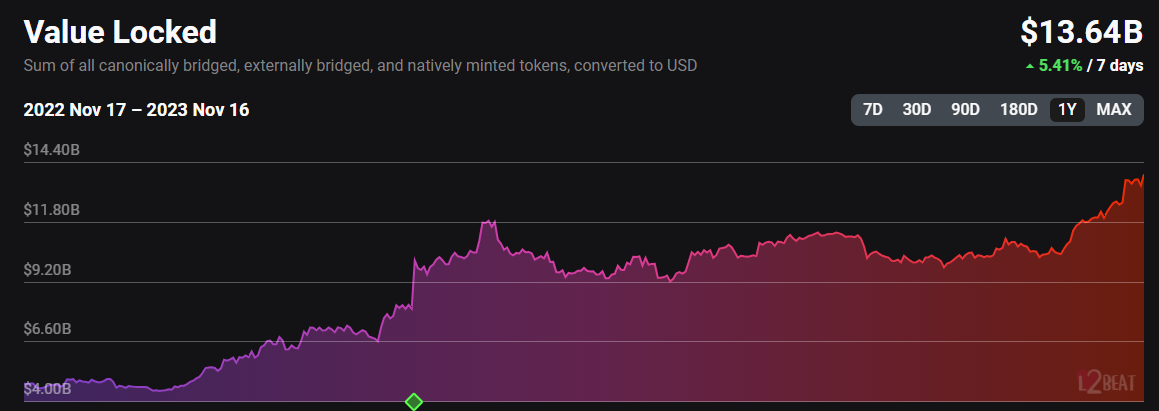
Source: L2 Beat showing Layer 2 TVL growth
Surge in TVL: The total value locked (TVL) in Layer 2 protocols has surged dramatically in 2023, reaching over $13 billion in November 2023. This growth indicates increasing adoption of Layer 2 solutions as users seek to solve the high fees and congestion on the Ethereum mainnet.
Expansion of Layer 2 Protocols: The number of Layer 2 protocols has continued to expand in 2023, with dozens of different protocols now available. These protocols cater to a wide range of use cases, including DeFi, NFTs, and gaming, demonstrating the versatility of Layer 2 solutions.
L2 Mainnet Launches: Several prominent Layer 2 protocols have launched their mainnets in 2023, including Mantle and zkSync. These mainnet launches signal the maturity of these protocols and their readiness for wider adoption.
Growing Developer Activity: Developer activity in the Ethereum Layer 2 ecosystem has been on the rise in 2023, with metrics such as Git repositories, active contributors, and developer commits showing significant growth. This increased activity indicates a growing interest in building and innovating on Layer 2 solutions.
Institutional Adoption: Institutional investors have begun to show increasing interest in Layer 2 solutions, recognizing their potential to address the scalability challenges of Ethereum. This institutional adoption is providing a boost to the ecosystem, attracting more capital and expertise.
Cross-Chain Bridges: The development of cross-chain bridges has facilitated the transfer of assets between Layer 2 protocols and the Ethereum mainnet, as well as other blockchains. This interoperability is crucial for unlocking the full potential of the Layer 2 ecosystem.
Zero-Knowledge Proofs (ZKPs): The use of ZKPs in Layer 2 protocols has gained traction in 2023, offering significant improvements in scalability and privacy. ZKPs allow for the verification of transactions without revealing the transaction details, enabling faster and more private transactions.
The Future of Layer 2 Scaling
The layer 2 ecosystem will need some work to carry out the highest potential of Ethereum. Here are some of the things developers may be working on in the future to improve the rollup sphere.
Modularity Improvements
By applying the principles of modularity to layer 2 blockchains, we can distribute the tasks and computational load of web3 across different components and layers while creating a much more efficient ecosystem that is easier to evolve as needed. Modular blockchains can be specialized for specific tasks, offering greater design adaptability. They are also easier to upgrade, as they can be improved one piece at a time, reducing the risk of disrupting chain operations.
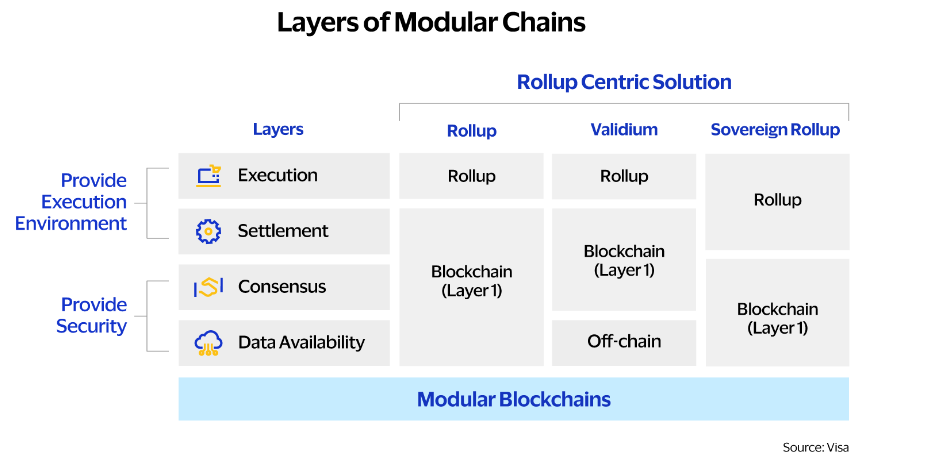
Source: Visa’s Monolithic vs. Modular Blockchains
Interoperability Upgrades
Interoperability enables the expansion of the layer 2 ecosystem by allowing applications and users alike to leverage the unique strengths and features of different blockchains without the headache that comes from constantly switching between disparate networks, wallets, and gas tokens. Interoperable networks elicit a cross-pollination of ideas and functionalities that fosters innovation and growth, attracting more users and developers to the blockchain space as it becomes easier to use. Composability is the ultimate version of this, as builders integrate different components to create a “stackable” DeFi ecosystem and a thriving financial foundation.
Security Updates
The Ethereum Layer 2 ecosystem has witnessed significant advancements in security over the past year and continues to evolve with new and improved security measures. In the future, it is likely that these security trends will continue, like enhanced fraud proofs and incentivized participation in the challenge process. This makes it more difficult for fraudulent transactions to go undetected. Zero-knowledge rollups (ZK rollups) are already leveraging more advanced zero-knowledge proofs to achieve stronger security guarantees, and advancements to cross-chain bridges will make all networks more resistant to attacks.
Ethereum as a Settlement Layer
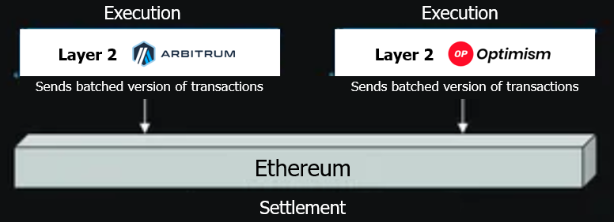
Source: Grayscale
Ethereum serves as the settlement layer for most Layer 2 solutions, regardless of whether they are optimistic rollups or zero-knowledge rollups. This means that Layer 2 transactions are ultimately finalized on the Ethereum mainnet, ensuring the security and immutability of the overall network. As Ethereum will only need to verify the batched version of transactions, the computational load of the network is lessened, leading to less congestion and better performance.
Ethereum is now expected to stand as the premier settlement layer for Web3 due to its mature ecosystem, established developer community, and superior decentralization. Its first-mover advantage and widespread adoption have resulted in a rich ecosystem of tools, services, and applications that support the development and deployment of layer 2 rollups. Additionally, Ethereum's strong security track record and ongoing efforts to enhance its scalability through upgrades like sharding further solidify its position as the foundation for Web3 infrastructure.
Collaboration: The Key to Mainstream Adoption
Contrary to how some view it (as the Layer 2 Wars), collaboration will be the key to mass adoption of Ethereum Layer 2 scaling solutions. Cross-chain teamwork and agreement on standards will enable the development of more robust, secure, and user-friendly solutions that can meet the needs of a wider range of users and applications. By working together, developers, researchers, enterprises, and community members can share knowledge, resources, and expertise to accelerate the development and adoption of Layer 2 solutions. This collaboration will lead to a more cohesive and interoperable Layer 2 ecosystem that can handle the increasing demand for scalability and efficiency on the Ethereum network and the blockchain industry as a whole.
Join the Conversation on Ankr’s Channels
Twitter | Telegram Announcements | Telegram English Chat | Help Desk | Discord | YouTube | LinkedIn | Instagram | Ankr Staking



